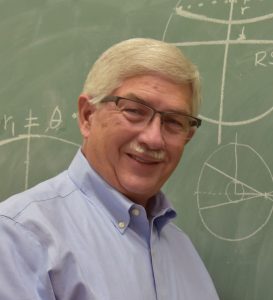 Professor, Department of Physics and Astronomy
Professor, Department of Physics and Astronomy
The University of New Mexico
Dr. McGraw has disclosed seven inventions and has received two UNM-affiliated issued U.S. patents for his atmospheric/astronomical sensing and imaging technologies.
Earth’s turbulent and turbid atmosphere is a major impediment to forefront ground-based astronomical observations with existing and planned large telescopes in the range of four to 30 meters in diameter. One goal of the measurement astrophysics research effort is to enable real-time measurement of precise and accurate positions and brightness of objects by measuring and correcting for atmospheric effects. One element of Dr. McGraw’s technology is an atmospheric Structure Function Monitor (SFM) that directly measures in real-time the amplitude and phase structure of an electromagnetic wavefront at the aperture of an imaging optical system. By measuring the phase perturbations and correcting them, a “perfect,” near diffraction-limited image can be reconstructed in the presence of blurring caused by atmospheric turbulence. The SFM can also detect and characterize turbulence for avoidance purposes, such as at airports where wake turbulence, wind shear and microbursts are threats to airport safety. The technology also has applications for energy and information delivery where robustly characterized turbulence allows for correction of a propagating wavefront, leading to enhanced accuracy.
Dr. McGraw and colleagues have formed a company, J. T. McGraw and Associates, LLC, (JTMA) to use optimized optical techniques to detect Earth-orbiting satellites and debris and provide robust, continuous surveillance of Earth orbital space. This research direction, originally spawned by development of astronomical instrumentation, is now responding to the evolution, nature and history of humans as we rapidly develop use of a new region of human endeavor: land, sea, air, and now Earth orbital space. This viewpoint for scientific and technical development is the result of working in a strong university environment.
JTMA has received two AFRL Phase I and II SBIR awards and a Phase I and II STTR award to develop the technology.
Dr. McGraw’s research focus is in the broad area of observational astronomy.
ISSUED U. S. PATENT (UNM-AFFILIATED)
7,319,556 Wide Field of View Telescope, issued January 15, 2008
8,103,045 Structure Function Monitor, issued January 24, 2012

